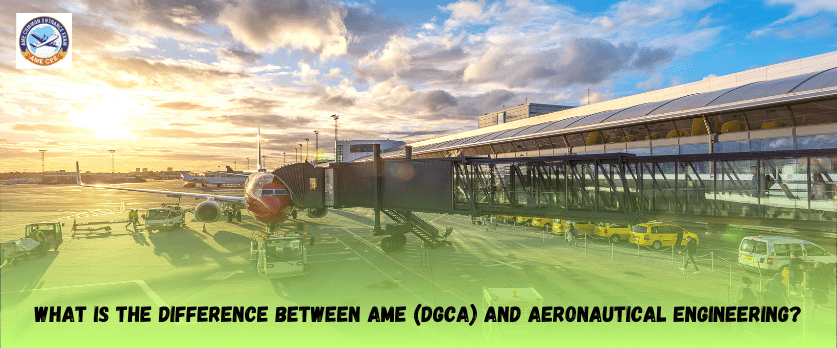The difference between Aircraft Maintenance Engineer (AME) under DGCA (Directorate General of Civil Aviation) and aeronautical engineering lies in their roles, responsibilities, and the nature of their work within the aviation industry. Here is a breakdown of the distinctions.
Aircraft Maintenance Engineer (AME) under DGCA
Role and Responsibilities
AME (DGCA) AMEs certified by DGCA are primarily responsible for the maintenance, repair, and inspection of aircraft. They play a crucial role in ensuring that aircraft are airworthy and comply with safety regulations. AMEs work on the ground, inspecting and maintaining aircraft systems, engines, avionics, and other components.
Training and Certification
AME (DGCA) Individuals aspiring to become AMEs undergo specialized training programs approved by DGCA. The training includes both theoretical and practical components related to aircraft maintenance. After completing the training and gaining practical experience, individuals must pass DGCA examinations to obtain the AME license.
Focus
AME (DGCA) AMEs focus on the hands-on maintenance and repair of existing aircraft. Their primary goal is to ensure the continued airworthiness of aircraft through regular inspections and maintenance activities.
Aeronautical Engineering
Role and Responsibilities
Aeronautical engineers are involved in the design, development, testing, and production of aircraft and aerospace systems. They work on creating new and improved aircraft technologies, focusing on aspects such as aerodynamics, materials, propulsion, and structural design.
Education and Qualifications
Aeronautical engineers typically hold a degree (bachelor’s or higher) in aeronautical engineering or a related field. Their education encompasses a broad range of subjects related to aircraft design, engineering principles, and aerospace technology.
Focus
Aeronautical engineers are more focused on the conceptualization, design, and development of aircraft. They use scientific and mathematical principles to improve aerodynamics, fuel efficiency, and overall aircraft performance.
Summary
The primary difference lies in their areas of focus and responsibilities within the aviation industry. AMEs (DGCA) concentrate on the maintenance and airworthiness of existing aircraft, while aeronautical engineers are involved in the design and development of new aircraft technologies. Both roles are essential for the overall functioning and advancement of the aviation sector, each contributing in its own way to the safety, efficiency, and innovation in aviation.
To become an aircraft maintenance engineer you may could join AME engineering through AME COMMON ENTRANCE EXAM (AME CEE) this examination you may join AME engineering approved by DGCA, EASA or UGC.

